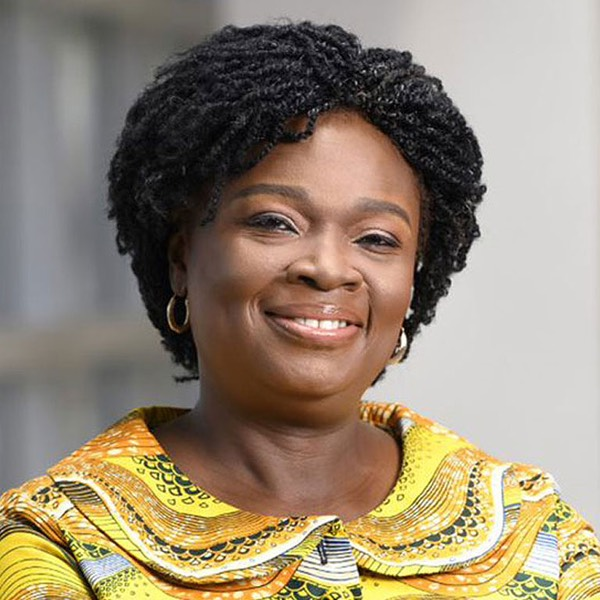
By Victoria Kwakwa*
I am thrilled to return to Rwanda, my home for three years when I served as Country Manager for the World Bank some 15 years ago. Rwanda’s transformation since then has been remarkable, as this small, beautiful land locked East African country forges ahead with its aspiration to become a middle-income country by 2035, improve the quality of life for all Rwandans, and become a climate resilient nation by 2050, articulated in its development strategy.
Among its many accomplishments, Rwanda has been one of the fastest growing economies in the world for almost a decade, averaging 7.2% over 2010 –19. More Rwandans now have access to electricity. Within a relatively short period, the Government of Rwanda has rapidly expanded access to electricity from 6% in 2009 to 61% in 2022. Its target is to reach 100% electricity access by 2024.
The country has also established itself as a leader in innovation and technology. It is one of the first nations in Africa to launch the delivery of critical medical supplies via drones, which has become important to overcoming geographical barriers and increasing efficiency in the distribution of medical supplies.
The COVID-19 pandemic presented major challenges for Rwanda, but the country showed resilience, registering a strong economic rebound in 2021. In 2022, spurred by the revival of tourism, real GDP grew 8.2% in the face of additional and overlapping shocks including soaring food prices because of Russia’s invasion of Ukraine and impacts of climate change.
Inclusive growth is still elusive, with high levels of unemployment and poverty. Poverty measured at the international poverty line of $2.15 a day (2017 PPP) stagnated at 52% in 2016, after declining from 75.2% in 2000 to 53.5% to 2013 period. This is due to slow growth in household consumption especially in rural areas. The unemployment rate was 24.3% in November 2022 (NISR). The country is looking to a model of growth that is more private sector led and not driven primarily by public investment. This requires addressing the persistent structural constraints to private investment becoming a real engine of growth and in providing the number of good quality jobs the country needs. Ninety-eight % of the 220,035 firms in Rwanda (NISR, 2020) are SMEs and 93% of them are categorized as informal. This informality, the small average firm size, and the low outward orientation of businesses hampers productivity. Lifting productivity of both large and small firms will require interventions to increase private sector participation in the economy. This involves stimulating competition and a level playing field, reducing production costs, improving effectiveness of subsidies designed to promote strategic activities, promoting regional integration, and facilitating pro-active industrial policies for innovation, state-owned enterprises, foreign direct investment and skills development.
The country is also still behind the average of low-income countries in crucial aspects of human capital such as education. While almost all Rwandan children have access to primary education, a commendable achievement, most struggle in their learning, including in terms of acquiring foundational literacy and numeracy skills. Many students drop out of school before completing their secondary education, with secondary net enrollment rate estimated at 35% in 2021. Access to further education and training also remains low, with enrollment rates in tertiary education hovering around 7%. Education quality remains a challenge.
Rwanda has taken good advantage of opportunities. During the COVID-19 pandemic, when schools were closed, the country accelerated its plans to tackle bottlenecks which reduce instruction time such as crowded classrooms and the long distances traveled by students to school. As a result, over 68,000 children, who previously had to walk over 5-7 kilometers to school, can now access schools within a two-kilometer radius. On average, student-to-classroom ratio was reduced from 73 students per class in 2019 to 49 students per class in 2021. This was achieved under the Rwanda Quality Basic Education for Human Capital Development Project, a World Bank supported project that contributed to the building of 22,500 classrooms and 31,000 toilets between 2020 and 2021. It also included the building of ramps for wheelchairs and gender-segregated toilets, ensuring that all students have access to education in a safe and sanitary environment. Sustained investments and bold reforms across the board—from revamping curricula, transforming teacher training, increasing access to teaching and learning materials, and expanding access at the secondary level—will be crucial to ensuring that all children in Rwanda have the education and skills to realize their potential and participate in the knowledge and services-led economy that Rwanda envisages.
The recent floods which hit the western parts of the country and led to the tragic loss of lives and the disruption of basic services, are a painful reminder of the urgent need to build resilience to better withstand the increasingly intense and frequent climate change related crisis. The Climate Change Development Report for Rwanda found that the country is well ahead of many others in responding to climate change challenges with ambitious and innovative response measures designed to chart a green, inclusive, responsive, and growth-oriented development pathway. The World Bank is committed to helping Rwanda accelerate progress on this pathway. We continue to mobilize financing, key development actors, and technical assistance across sectors, including climate resilience for water systems, farmer-led irrigation for high value crops in drier regions of the country, solar pumping of water, sanitation and drainage in urban areas, energy efficiency and disaster risk management improvements for roads and transport.
For me, the speed with which Rwanda has achieved major transformations since I was last there is evidence that much more can be done to tackle remaining challenges and realize the country’s development aspirations. My hope is to hear from various stakeholders and to exchange ideas on how we can work together to better support the country’s efforts to achieve rapid growth that is inclusive, create good quality jobs to reduce poverty, accelerate development and improve the quality of life of all Rwandans. (End)
